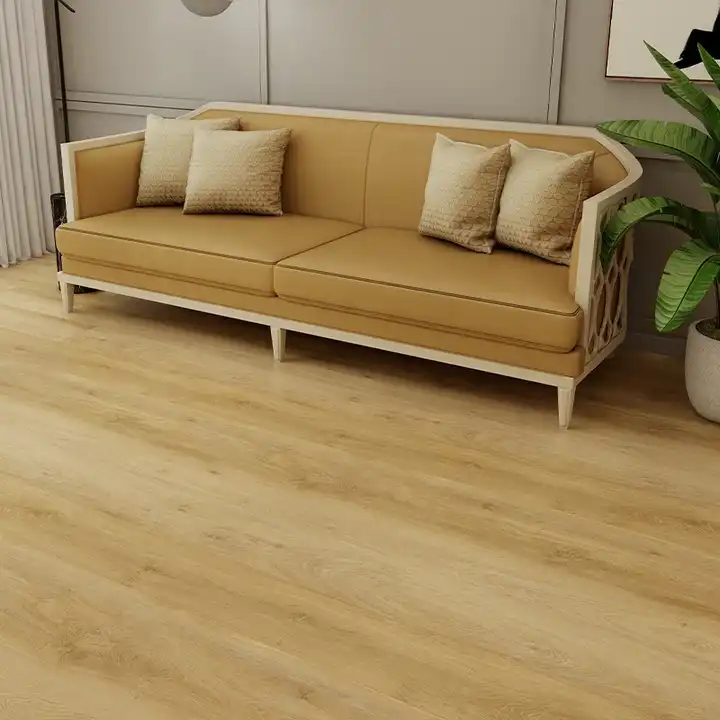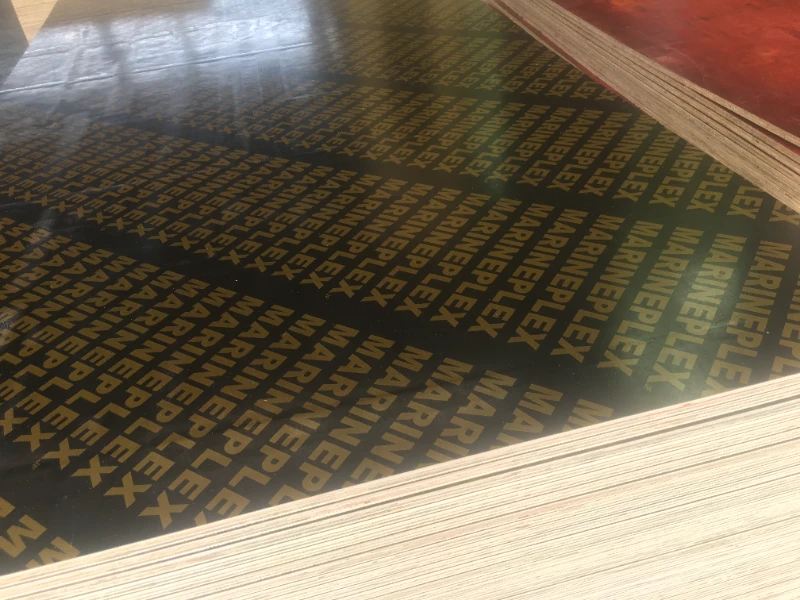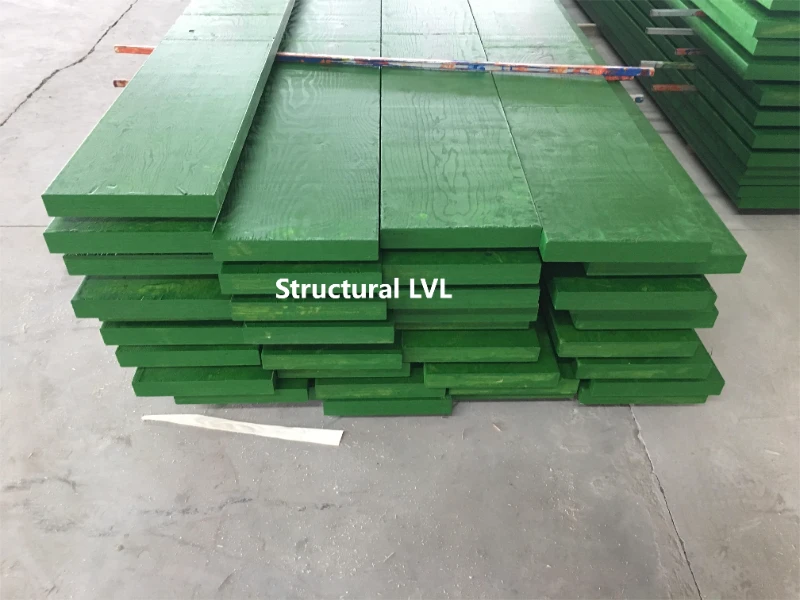This article serves as a comprehensive guide to understanding the different types of plywood available and how to select the best types for your specific needs, focusing on structural projects. Whether you're a seasoned contractor or a DIY enthusiast, understanding plywood grades and their applications is crucial for ensuring the success and longevity of your construction plywood projects. It’s worth reading because it breaks down complex information into easy-to-understand terms, providing practical advice and insights directly from a manufacturer's perspective.
What Exactly is Plywood, and Why is it So Versatile?
Plywood is an engineered wood product made by gluing together thin sheets of veneer, also known as plies. These layers are glued together in alternating right angles, a process called cross-graining, which gives plywood its exceptional strength and stability. This construction method minimizes expansion and contraction with changes in humidity, making plywood far more stable than solid wood.
Because plywood is an inexpensive, versatile, and readily available material, it’s a staple in construction and DIY projects. From structural applications like roofing and flooring to finishing touches like cabinetry, plywood offers a unique blend of strength, workability, and cost-effectiveness. It plywood is designed to be durable and resist damage. It's designed to withstand everyday use, wear and tear.

What Are the Common Types of Plywood Available?
There are numerous types of ply, each designed for specific applications. Here's a breakdown of some of the most common types of plywood:
- Softwood Plywood: Typically made from pine, fir, or spruce, softwood plywood is commonly used for structural projects like roofing, sheathing, and subfloors. Its strength and relatively low cost make it a popular choice.
- Hardwood Plywood: Made from woods like birch, maple, or oak, hardwood plywood is known for its finer grain, smoother surface, and increased durability. It's often used for applications where aesthetics are important, such as furniture, cabinets, and decorative paneling.
- Structural Plywood: Specifically engineered for load-bearing applications, structural plywood is designed to meet specific building codes and standards. It features enhanced strength and stiffness, making it suitable for beams, walls, and floors.
- Non-Structural Plywood: This type of plywood is intended for applications where strength is not the primary concern, such as interior paneling, underlayment, and some types of furniture.
- Marine Plywood: As the name suggests, marine plywood is designed to withstand prolonged exposure to moisture. It uses waterproof glue and higher-quality veneers, making it ideal for boat building and other applications where water resistance is crucial.
- Film Faced Plywood: This is a type of plywood with a special film coating on its face and back. This film, usually phenolic or melamine, provides a smooth, durable, and moisture-resistant surface. It's commonly used in concrete formwork. Check our product here: 12mm Film faced plywood.
- Formply: A type of plywood specially manufactured for concrete formwork. It's typically made with a high-density overlay (HDO) on both sides, providing a smooth, reusable surface for concrete casting. We produce high quality Formply. Formply F17 1800×1200×17mm.
- Oriented Strand Board (OSB): While technically not plywood, OSB is a related engineered wood product made from strands of wood oriented in specific directions and bonded with resin. It's often used as a cost-effective alternative to plywood in sheathing and subflooring.
Although specialty plywood exists for almost any purpose, these core categories cover the vast majority of applications.
How Do Plywood Ratings Work? Decoding Grades and Sizes
Plywood ratings can seem confusing, but they're essential for selecting the right plywood for your project. Plywood is graded based on the quality of the face and back veneers, and the type of glue used. The grading system typically uses letters (A, B, C, D) to indicate the veneer quality, with A being the highest quality and D the lowest.
-
A-Grade Plywood: Virtually flawless, with a smooth, sanded surface suitable for finishing. Any small imperfections are neatly repaired.
-
B-Grade Plywood: Also has a sanded surface, but may have minor imperfections or repairs.
-
C-Grade Plywood: May have some knots and minor defects, suitable for applications where appearance is less critical.
-
D-Grade Plywood: Allows for larger knots and defects; typically used for sheathing and subfloors where it won't be visible.

In addition to the letter grades, plywood often has a rating like "Exposure 1" or "Exterior." Exposure 1 indicates that the plywood can withstand some moisture exposure during construction but is not intended for long-term exposure to the elements. Exterior plywood uses waterproof glue and is suitable for projects like outdoor use. Structural 1 rating mean, the plywood is rated for seismic retrofit.
Grades and sizes directly impact the plywood's suitability for different applications. Thicker plywood with higher grades is generally used for structural applications, while thinner, lower-grade plywood is suitable for non-structural uses.
What's the Difference Between Hardwood and Softwood Plywood?
The primary difference lies in the wood species used for the veneers. Hardwood plywood typically uses denser, more durable woods like birch, maple, and oak, resulting in a smoother, finer-grained surface. This makes it ideal for applications where appearance is important, such as cabinets and furniture.
Softwood plywood, on the other hand, uses woods like pine, fir, and spruce. It's generally more affordable and is commonly used in construction due to its strength and availability. Softwood plywood is a workhorse for applications like sheathing, subflooring, and roofing.
For example, Mark might choose hardwood plywood for a visible cabinet project but opt for softwood plywood for the subfloor underneath. The choice depends entirely on the project requirements and the desired look and feel.
What are the uses of structural plywood?
Structural Plywood, as implied by its name, is used for application that require load-bearing capabilities and adherence to building codes. Here are some uses:
- Beams and Girders: Structural plywood can be used to fabricate beams and girders, essential components for supporting floors and roofs.
- Sheathing: Used in wall, roof, and floor sheathing, providing a solid base for cladding, roofing materials, and flooring.
- Flooring: Often used as a subfloor material, providing a strong and stable base for finished flooring like hardwood, tile, or carpet.
- Concrete Formwork: Certain types of structural plywood, especially those with special coatings, are used as formwork for casting concrete.
How to Choose the Right Plywood for Your Project?
Selecting the right plywood involves considering several factors:
- Application: What is the plywood going to be used for? Will it be exposed to water or weather? Will it be visible or hidden?
- Strength Requirements: Does the plywood need to be load-bearing? If so, structural plywood is a must.
- Appearance: If the plywood will be visible, hardwood plywood or A-grade plywood might be the best choice.
- Budget: Plywood prices vary significantly based on grade and type. Determine your budget and choose the best plywood for your project within that range.
-
Project Type: Use this infomation to know the best plywood for your project.
Project Type Recommended Plywood Type(s) Roofing Structural Plywood (Exposure 1 or Exterior), OSB Flooring (Subfloor) Structural Plywood (Exposure 1), OSB Wall Sheathing Structural Plywood (Exposure 1 or Exterior), OSB Cabinets Hardwood Plywood (A or B Grade), Cabinet-Grade Plywood Furniture Hardwood Plywood (A or B Grade), Furniture-Grade Plywood Concrete Formwork Film Faced Plywood, Formply, HDO Plywood Boat Building Marine Plywood Interior Paneling Hardwood Plywood (A, B, or C Grade), Non-Structural Plywood Underlayment Non-Structural Plywood, Underlayment-Grade Plywood
Remember, always consult local building codes and regulations to ensure your plywood choice meets the required standards.
What Should I Consider When Buying Plywood from Overseas? (A Manufacturer's Perspective)
As Allen, a representative of a Chinese engineered wood products factory, I can offer some insights into what Mark, and customers like him, should prioritize when purchasing plywood from overseas suppliers:
-
Quality Inspection: This is paramount. Request detailed product specifications, including the grade, moisture content, lamination quality, and wood species used. Consider third-party inspections to verify quality before shipment.
-
Certifications: Ensure the supplier has relevant certifications, such as FSC (Forest Stewardship Council) for sustainable sourcing, CARB (California Air Resources Board) compliance for formaldehyde emissions, and structural certifications (like APA – The Engineered Wood Association) if you're buying structural plywood.
-
Dimensional Accuracy: Specify the required dimensions and tolerances clearly. Inconsistent dimensions can cause significant problems during construction.

-
Lead Times: Get clear information on production and shipping lead times. Delays can disrupt construction schedules.
-
Logistics: Understand the shipping terms (Incoterms) and who is responsible for transportation, insurance, and customs clearance.
-
Payment Methods: Establish secure and reliable payment methods, such as letters of credit, to protect both parties.
-
Communication: Maintain open and frequent communication with the supplier throughout the process. Address any concerns promptly.
-
Factory Visit (if possible): If dealing with large volumes, a factory visit can be invaluable for verifying the supplier's capabilities and quality control processes.
What Are the Common Plywood Grades and Their Applications?
Beyond the basic A-D grading, there are more specific grades and designations:
- Marine-Grade: Uses waterproof glue and high-quality veneers; designed for prolonged exposure to moisture.
- Sanded Plywood: Has a smooth, sanded surface ready for finishing.
- Cabinet-Grade: Hardwood plywood with a high-quality veneer on one or both sides, ideal for cabinets and furniture.
- Underlayment-Grade: Plywood specifically designed for use under finished flooring, providing a smooth, stable base.
- Structural I (Struc I): Designed specifically for shear walls and diaphragms in construction. Requires all veneer plys to be B-grade or better.
- Project Plywood Panels: Also known as pre-cut project panels, these are smaller-sized plywood sheets designed for DIY projects, hobbyists, and smaller construction tasks. These panels are typically available in standard sizes like 2x2, 2x4, and 4x4 feet, making them easier to handle and transport than full-size plywood sheets.
What are the different plywood options available for different project?
Here is the break down for different project:
-
For Shelving and Storage:
- Option 1 (Budget-Friendly): C-D grade softwood plywood. It's strong enough for most shelving needs, and the imperfections won't be visible if you're painting or covering the shelves.
- Option 2 (Mid-Range): B-C grade softwood or hardwood plywood. This offers a better appearance and slightly more durability.
- Option 3 (High-End): A-B grade hardwood plywood (like birch or maple). Provides the best look and feel for visible shelving.
-
For Underlayment (beneath flooring):
- Use underlayment-grade plywood. This is specifically designed to create a smooth, stable surface for finished flooring.
-
For Crafts and Small DIY Projects:
- Project plywood panels are your best bet. They're convenient, easy to handle, and available in various grades.
-
Outdoor Signage or Temporary Structures:
- Exterior-grade plywood is essential. Consider MDO (Medium Density Overlay) plywood for a smoother, more paintable surface.
-
Projects Exposed to Humidity (Bathrooms, Laundry Rooms):
- While no plywood is truly waterproof, marine-grade plywood offers the best resistance to moisture.
-
For Projects Where Strength is Paramount (Load-Bearing Walls, Beams):
- Structural plywood with the appropriate grade and certification is non-negotiable.
Where Can I Find High-Quality Plywood for My Next Project?
JSYLVL, my company, specializes in manufacturing a wide range of engineered wood products, including LVL Timber, Film faced plywood, Structural Plywood, Non-Structural Plywood, Formply, OSB Board, and more. We have multiple production lines and export to major markets like the USA, North America, Europe, and Australia. We are committed to providing high-quality products with consistent dimensions, reliable strength, and adherence to relevant certifications. For example, our Structural LVL E13.2 240×45 H2S Treated is an excellent choice for structural framing in residential and commercial construction.

We understand the needs of construction companies, building materials suppliers, door manufacturers, and other professionals. We encourage potential customers to contact us directly to discuss their specific project requirements and receive personalized quotes.
Summary: Key Takeaways
- Plywood is a versatile engineered wood product made from thin layers of veneer glued together.
- Different types of plywood exist, each suited for specific applications.
- Plywood grades (A, B, C, D) indicate the quality of the veneers.
- Structural plywood is designed for load-bearing applications and must meet specific building codes.
- When buying from overseas suppliers, prioritize quality inspection, certifications, dimensional accuracy, and clear communication.
- Consider the application, strength requirements, appearance, and budget when choose the best plywood for your project.
- For best result, always consider, plywood options for different project
This article has provided a comprehensive overview of plywood, from its basic construction to its various types, grades, and applications. By understanding these factors, you can confidently choose the right plywood and ensure the success of your next project. Remember, as Allen from JSYLVL, I'm always here to help you find the right plywood and answer any questions you may have.
Post time: Mar-12-2025




